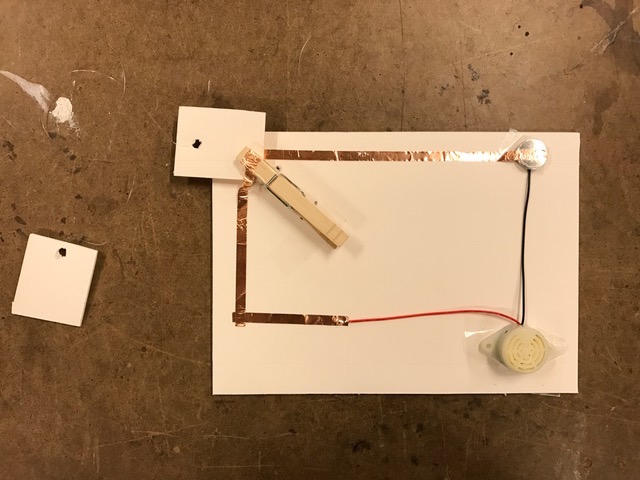Light Box — Miniature Interior
- Post By: Jamie
- Date:
- Category: Spring 2017, Tangible Interaction Studio

With this project, I wanted to take the light box further and try to figure out the next stage in product design interiors — how to make it as small as possible to have it self-contained, fully functional and more […]
Read MoreFirst Kid Alarm Prototype
- Post By: Jamie
- Date:
- Category: Spring 2017, Thesis

PROJECT IDEAS FOR KITS: Tiny flashlight so they can read in the dark when their parents think they’re asleep OR they can read top secret documents in secret! Invisible ink that can only be read with the UV light they […]
Read MoreDupont Stretchable Inks
- Post By: Jamie
- Date:
- Category: Soft Robotics, Spring 2017

WEARABLE TECH This past summer, The Mill created a position for me in the Emerging Tech department. With my filmmaking background and current masters program at ITP, I was one of the few people who fit both fields combined. But […]
Read MoreAround the Clock 80’s
- Post By: Jamie
- Date:
- Category: Spring 2017, Tangible Interaction Studio

On this assignment, I took Tom Igoe’s advice and first thought through the interaction before starting with the circuitry. We needed to build a physical music player that could be operated by a blind person — basically the six functions […]
Read MoreMy Sensor Report from Tangible Interactions Website
- Post By: Jamie
- Date:
- Category: Spring 2017, Tangible Interaction Studio

Description The stretch sensor is a polymer component that changes resistance when stretched. It is an analog variable resistant component that can be wired similarly to a potentiometer, but offers a very different interaction. The user stretches the rubberband-like component […]
Read MoreGirl Power Thesis Pitch
- Post By: Jamie
- Date:
- Category: Spring 2017, Thesis

Thesis Question: How can I inspire middle school girls to learn technology through storytelling? Description: I want to write a female-driven adventure novel and build a larger fictional world tied to electronics kits. My thesis itself will be the proof-of-concept […]
Read MoreLight Box Part Deux
- Post By: Jamie
- Date:
- Category: Spring 2017, Tangible Interaction Studio

Our assignment this week was to build a lighting controller. Since I loved the light box I made for intro to fabrication and always wanted to play with expanding it and creating different versions of it, I decided to use […]
Read MoreTrunk Shenanigans
- Post By: Jamie
- Date:
- Category: Soft Robotics, Spring 2017

This week our assignment was to play with cable control for movement within the context of soft robotics. In class, we made roman curtains using thread as cables, drinking straws as runners and tissue paper for the curtain itself. We […]
Read MoreGame Controller — a lesson in troubleshooting
- Post By: Jamie
- Date:
- Category: Spring 2017, Tangible Interaction Studio

The assignment was to build a game controller to operate Atari’s Lunar Lander. Nothing about it seemed too complicated — simple circuitry, a bit of code and housing for the board, circuit and buttons. On Sunday I built the circuit […]
Read More